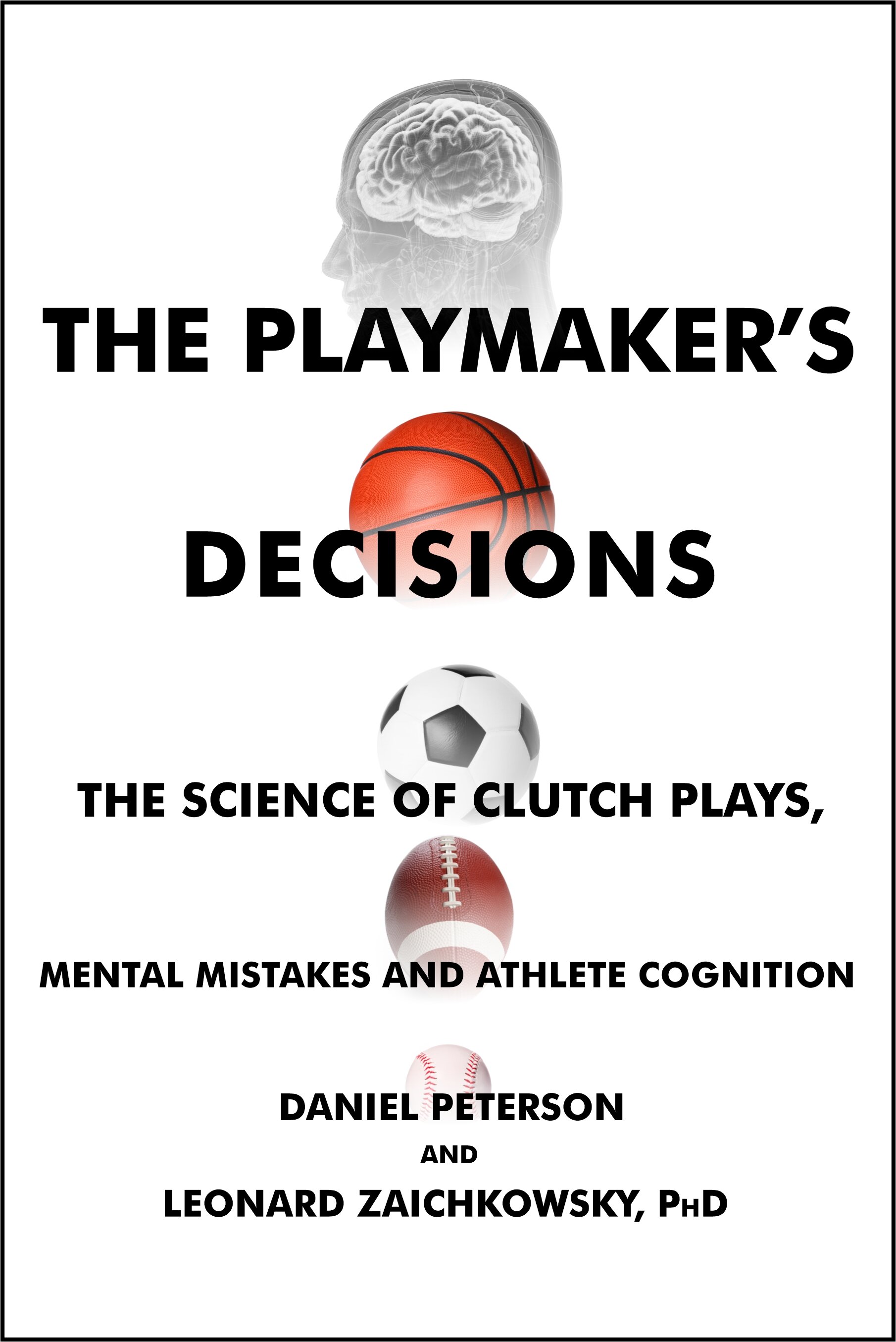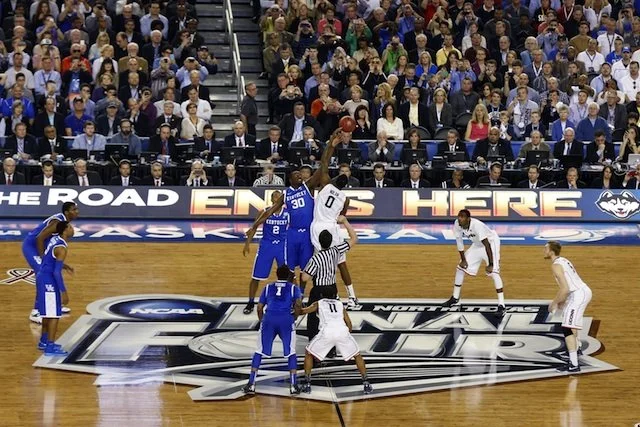Baseball and the Brain - Pitching
/
As promised, we begin our look at the three most important technical skills of baseball: Pitching, Hitting and Catching. Each of these skills apply to other sports as well, but I thought we'd stick with the current season of baseball as the sport du jour. Again, my focus for "80 Percent Mental" is to look at sports cognition in a generic sense across all sports, occasionally digging deeper into individual sport specialties. The practical side of this is to understand how our brains and nervous system perform these skills that we often take for granted, so that we can brainstorm (yuk-yuk) on new ways to teach, practice and perfect these skills.
Pitching/Throwing
Pitching a 3" diameter baseball 46 feet (for Little League) or 60 feet, 6 inches over a target that is 8 inches wide requires an accuracy of 1/2 to 1 degree. Throwing it fast, with the pressure of a game situation makes this task one of the hardest in sports. In addition, a fielder throwing to another fielder from 40, 60 or 150 feet away, sometimes off balance or on the run, tests the brain-body connection for accuracy. So, how do we do it? And how can we learn to do it more consistently?
Questions that come to my mind regarding pitching/throwing skills and baseball include:
- Why can't a pitcher control ALL of his/her pitches? Why do some not only miss the strike zone, but are wild?
- Is the breakdown physical in the muscle sequence of the throw or is it in the connection between eyes, brain and body?
 Again, one the best references I have found on this is "The Psychology of Baseball" by Mike Stadler, published by Gotham Books. Prof. Stadler digs into many of these topics and I will paraphrase from his findings. I won't do it justice here, so please put it on your reading list.
Again, one the best references I have found on this is "The Psychology of Baseball" by Mike Stadler, published by Gotham Books. Prof. Stadler digs into many of these topics and I will paraphrase from his findings. I won't do it justice here, so please put it on your reading list.
There are two dimensions to think about when throwing an object at a target: vertical and horizontal. The vertical dimension is a function of the distance of the throw and the effect of gravity on the object. So the thrower's estimate of distance between himself and the target will determine the accuracy of the throw vertically. Basically, if the distance is underestimated, the required strength of the throw will be underestimated and will lose the battle with gravity, resulting in a throw that will be either too low or will bounce before reaching the target. An example of this is a fast ball which is thrown with more velocity, so will reach its target before gravity has a path-changing effect on it. On the other hand, a curve ball or change-up may seem to curve downward, partly because of the spin put on the ball affecting its aerodynamics, but also because these pitches are thrown with less force, allowing gravity to pull the ball down. In the horizontal dimension, the "right-left" accuracy is related to more to the "aim" of the throw and the ability of the thrower to adjust hand-eye coordination along with finger, arm, shoulder angles and the release of the ball to send the ball in the intended direction.
So, looking at our first question, how do we improve accuracy in both dimensions? Prof. Stadler points out that research shows that skill in the vertical/distance estimating dimension is more genetically determined, while skill horizontally can be better improved with practice. Remember those spatial organization tests that we took that show a set of connected blocks in a certain shape and then show you four more sets of conected blocks? The question is which of the four sets could result from rotating the first set of blocks. Research has shown that athletes that are good at these spatial relations tests are also accurate throwers in the vertical dimension. Why? The thought is that those athletes are better able to judge the movement of objects through space and can better estimate distance in 3D space. Pitchers are able to improve this to an extent as the distance to the target is fixed. A fielder, however, starts his throw from many different positions on the field and has more targets (bases and cut-off men) to choose from, making his learning curve a bit longer.
If a throw or pitch is off-target, then what went wrong? Prof. Stadler collects many different studies that review the possible physiological/mechanical reasons for "bad throws". Despite all of the combinations of fingers, hand, arm, shoulder and body movements, it seems to all boil down to the timing of the finger release of the ball. In other words, when the pitcher's hand comes forward and the fingers start opening to allow the ball to leave. The timing of this release can vary by hundredths of a second but has significant impact on the accuracy of the throw. But, its also been shown that the throwing action happens so fast, that the brain could not consciously adjust or control that release in real-time. This points to the throwing action being controlled by what psychologists call an automated "motor program" that is created through many repeated practice throws. But, if a "release point" is incorrect, how does a pitcher correct that if they can't do so in real-time? It seems they need to change the embedded program by more practice.
Another component of "off-target" pitching or throwing is the psychological side of a player's mental state/attitude. Stadler identifies research that these motor programs can be called up by the brain by current thoughts. There seems to be "good" programs and "bad" programs, meaning the brain has learned how to throw a strike and learned many programs that will not throw a strike. By "seeding" the recall with positive or negative thoughts, the "strike" program may be run, but so to can the "ball" program. So, if a pitcher thinks to himself, "don't walk this guy", he may be subconsciously calling up the "ball" program and it will result in a pitch called as a ball. So, this is why sports pscyhologists stress the need to "think positively", not just for warm and fuzzy feelings, but the brain may be listening and will instruct your body what to do.
Game Summary
I've only touched the surface for this topic. We'll see some of these themes in the hitting and catching posts that are coming up. One useful takeaway here for youth coaches is that some players will have a genetic advantage in throwing and may be your "natural" pitchers. As we dig deeper into these topics, we will be able pull out more practical tips for players and coaches.
Pitching/Throwing
Pitching a 3" diameter baseball 46 feet (for Little League) or 60 feet, 6 inches over a target that is 8 inches wide requires an accuracy of 1/2 to 1 degree. Throwing it fast, with the pressure of a game situation makes this task one of the hardest in sports. In addition, a fielder throwing to another fielder from 40, 60 or 150 feet away, sometimes off balance or on the run, tests the brain-body connection for accuracy. So, how do we do it? And how can we learn to do it more consistently?
Questions that come to my mind regarding pitching/throwing skills and baseball include:
- Why can't a pitcher control ALL of his/her pitches? Why do some not only miss the strike zone, but are wild?
- Is the breakdown physical in the muscle sequence of the throw or is it in the connection between eyes, brain and body?
 Again, one the best references I have found on this is "The Psychology of Baseball" by Mike Stadler, published by Gotham Books. Prof. Stadler digs into many of these topics and I will paraphrase from his findings. I won't do it justice here, so please put it on your reading list.
Again, one the best references I have found on this is "The Psychology of Baseball" by Mike Stadler, published by Gotham Books. Prof. Stadler digs into many of these topics and I will paraphrase from his findings. I won't do it justice here, so please put it on your reading list.There are two dimensions to think about when throwing an object at a target: vertical and horizontal. The vertical dimension is a function of the distance of the throw and the effect of gravity on the object. So the thrower's estimate of distance between himself and the target will determine the accuracy of the throw vertically. Basically, if the distance is underestimated, the required strength of the throw will be underestimated and will lose the battle with gravity, resulting in a throw that will be either too low or will bounce before reaching the target. An example of this is a fast ball which is thrown with more velocity, so will reach its target before gravity has a path-changing effect on it. On the other hand, a curve ball or change-up may seem to curve downward, partly because of the spin put on the ball affecting its aerodynamics, but also because these pitches are thrown with less force, allowing gravity to pull the ball down. In the horizontal dimension, the "right-left" accuracy is related to more to the "aim" of the throw and the ability of the thrower to adjust hand-eye coordination along with finger, arm, shoulder angles and the release of the ball to send the ball in the intended direction.
So, looking at our first question, how do we improve accuracy in both dimensions? Prof. Stadler points out that research shows that skill in the vertical/distance estimating dimension is more genetically determined, while skill horizontally can be better improved with practice. Remember those spatial organization tests that we took that show a set of connected blocks in a certain shape and then show you four more sets of conected blocks? The question is which of the four sets could result from rotating the first set of blocks. Research has shown that athletes that are good at these spatial relations tests are also accurate throwers in the vertical dimension. Why? The thought is that those athletes are better able to judge the movement of objects through space and can better estimate distance in 3D space. Pitchers are able to improve this to an extent as the distance to the target is fixed. A fielder, however, starts his throw from many different positions on the field and has more targets (bases and cut-off men) to choose from, making his learning curve a bit longer.
If a throw or pitch is off-target, then what went wrong? Prof. Stadler collects many different studies that review the possible physiological/mechanical reasons for "bad throws". Despite all of the combinations of fingers, hand, arm, shoulder and body movements, it seems to all boil down to the timing of the finger release of the ball. In other words, when the pitcher's hand comes forward and the fingers start opening to allow the ball to leave. The timing of this release can vary by hundredths of a second but has significant impact on the accuracy of the throw. But, its also been shown that the throwing action happens so fast, that the brain could not consciously adjust or control that release in real-time. This points to the throwing action being controlled by what psychologists call an automated "motor program" that is created through many repeated practice throws. But, if a "release point" is incorrect, how does a pitcher correct that if they can't do so in real-time? It seems they need to change the embedded program by more practice.
Another component of "off-target" pitching or throwing is the psychological side of a player's mental state/attitude. Stadler identifies research that these motor programs can be called up by the brain by current thoughts. There seems to be "good" programs and "bad" programs, meaning the brain has learned how to throw a strike and learned many programs that will not throw a strike. By "seeding" the recall with positive or negative thoughts, the "strike" program may be run, but so to can the "ball" program. So, if a pitcher thinks to himself, "don't walk this guy", he may be subconsciously calling up the "ball" program and it will result in a pitch called as a ball. So, this is why sports pscyhologists stress the need to "think positively", not just for warm and fuzzy feelings, but the brain may be listening and will instruct your body what to do.
Game Summary
I've only touched the surface for this topic. We'll see some of these themes in the hitting and catching posts that are coming up. One useful takeaway here for youth coaches is that some players will have a genetic advantage in throwing and may be your "natural" pitchers. As we dig deeper into these topics, we will be able pull out more practical tips for players and coaches.














